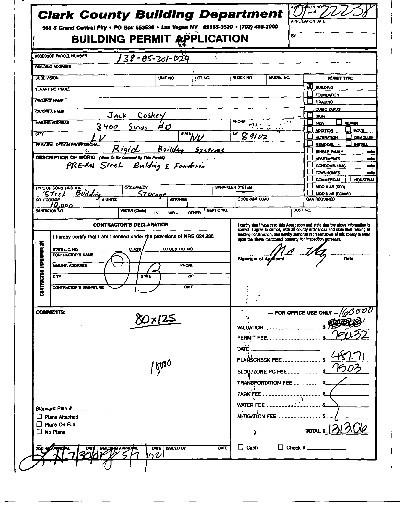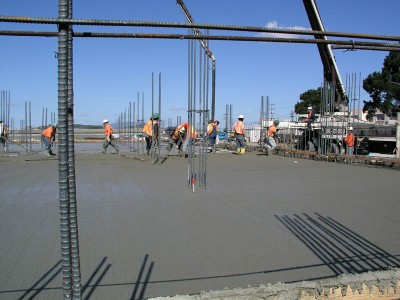Non-Work Activities
The construction schedule is, by its very name, a schedule of construction activities. There are, however, many activities that do not require material, labor, and equipment but whose delay will result in delay to the construction effort. These tasks are called "non-work" activities. There are several different types of non-work activities that should be included in your schedule. These most common of these activities are: procurement, permitting, space access, and evaporation activities.
Procurement Activities
Procurement activities should be included for all long-lead pieces of equipment to be installed in the facility. Elevators are notorious for delaying projects if the procurement cycle is not aggressively monitored. This is because elevators may take over a year between the time an order is placed and the arrival of the equipment on the site. If a contract includes the installation of systems furniture, it should also be included. Delays in procurement also may occur if the owner fails to make timely decisions, or provide timely approvals, of construction submittals. In general a set of activities including: product submittal, product approval, and product delivery should be included for all equipment that cannot be purchased in-bulk at local or regional supply outlets.
The scheduler and procurement office staff should coordinate with the designated Contractor Quality Control since each party may have data systems supporting the capture of planned and actual information on such items. The scheduler will include non-work activities in a schedule. The procurement clerk in the contractor’s office will likely have a procurement tracking application. The construction contract will typically require a submittal register that will include delivery of information on the entire set of items installed in the building.
The scheduler should take the lead, if a systems integrator is not part of the team, to point out and support the need for integration of these three (and possibly other) systems to reduce duplicate data entry. A scheduler who is knowledgeable in information systems integration is always a valuable addition to the team.
Permitting Activities
Permitting and other types of administrative requirements identified in the contract should also be included in the schedule. This is to ensure that the “to-do” list of administrative requirements may be prioritized based on the late finish dates of the delivery of the permit or administrative approval requirement. These non-work requirements change across jurisdictions and contract administrator. As a result, the scheduler must take great care to discuss these requirements with the prime contractor and include the indicated activities.

Access Requirement Activities
Similar to permitting activities, there may also be constraints associated with access to work areas. As noted previously, you may use a "Start No Earlier Than" milestone to constrain work area access requirements that are contractually identified. Since some work area access issues are contingent upon the actions of others, such as personnel clearances or issuance of badges. In these cases it may be important for such non-work activities to be included in the schedule. Including activities for which you are not responsible in a schedule will allow you to demonstrate to those parties how their actions directly impact the expeditious completion of the project. Of course it would be better if your communications, in terms of showing schedule impact are helpful before there is a delay; however, if those external parties are the cause of project delays, then you will have a documented basis upon which to state your formal claims.
Evaporative Activities
The final type of non-work activities often relate to reduction in moisture content of building materials. For example, the recommended pattern of activities used to model cast-in-place concrete included the activity “cure concrete.” It is critical that this activity be included in the schedule because it is a proxy for a resource that its typically not considered when creating schedules. That resource is the “availability of work space.” Moving onto a slab above that has not properly cured has caused many accidents and fatalities. The concrete curing activity makes sure that the following crew is not scheduled to enter the workspace until it is safe to do so. Concrete curing will typically take 14 days so it’s duration is significant enough to warrant its inclusion within the schedule. In some circumstances, such as in buildings without adequate temperature and humidity control, time for drywall spackling and paint drying may also need to be included in the schedule.

As an advanced topic, please consider the following question to be addressed during the “calendar” page of the CPMtutor. How are the durations of evaporative activities different from those of work activities.
Work Activity Coding
Non-work activities should be identified with single digit activity code called “Work Activity.” A zero may be used to indicate a non-work activity. The number one may be used to indicate an actual construction activity. One of the key goals for a schedule is to allow those responsible for a given set of activities to be able to determine the criticality of those activities. The “work activity” code alone is insufficient for this purpose.
In discussion of the needed coding for crews, it was identified that the crew type would be put within an activity code called “Responsibility Code.” Responsibility code is used since the party responsible for non-work activities may be a contractor’s procurement office staff, owner, or party having jurisdiction. The combination of “Work Activity” and “Responsibility Code” is critical to the proper identification of who gets the call when problems arise with non-work activities. If you don't assign them to the appropriate party, then the issues may not be properly tracked.